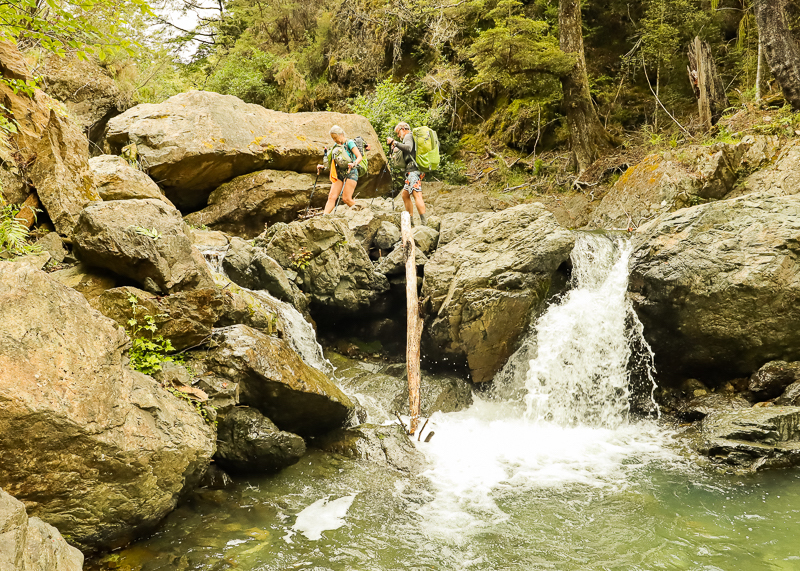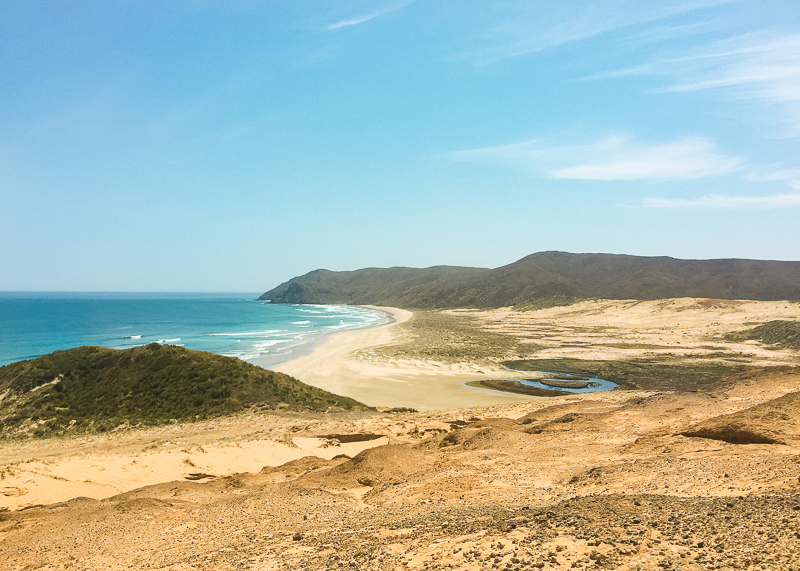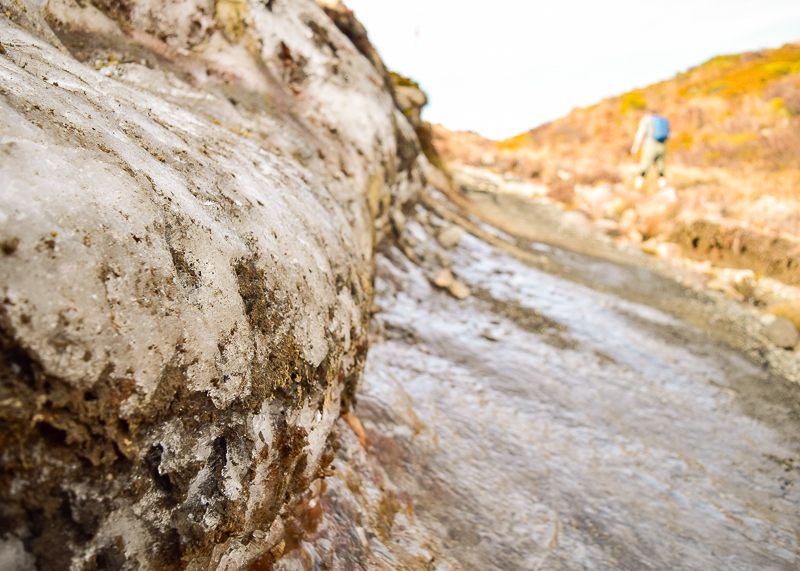Long White Gypsy uses affiliate links and is a member of the Amazon Services LLC Associates Program. If you make a purchase using one of these links, I may receive a small commission at no extra cost to you. See my Privacy Policy for more information.
The changeable climate and weather conditions in New Zealand mean that we have plenty of tracks to choose from whatever the weather may be! But just exactly when is the best time to hike in New Zealand?
Whether you’re planning a trip from overseas or you’re just new to hiking in New Zealand, this post will help you understand the New Zealand hiking seasons so that you can avoid (or better prepare for) the hassles and dangers that come with off-season weather and conditions.
Understand Changeable Weather
If you’re researching the best time to hike in New Zealand, you first need to be aware of NZ’s changeable weather, which is characteristic of island nations.
New Zealand is a set of islands located in the southernmost section of the Pacific Ocean between the 46th and 47th lines of latitude. This region is known as the Roaring Forties due to the forces of air and wind constantly being displaced between the equator and the South Pole.
Because of its isolation in the middle of the ocean, New Zealand bears the full brunt of southern weather systems due to the lack of nearby landmasses to break it up.
Our small islands are no match for the turbulent weather in the Roaring Forties, therefore it’s common for a crisp blue and sunny morning to turn to a squally, stormy or even snowy afternoon … sometimes even in the middle of summer!
Being prepared is the name of the game.

Be Aware of Weather Patterns
It’s always important to be aware of weather patterns when considering the best time to hike in New Zealand, especially if you’ll be travelling through the high country.
Weather at higher elevations is much less predictable and can change in an instant.
Perhaps the most dangerous aspect of NZ weather for hikers and trampers is the threat of heavy rain and rising rivers. A freak storm which affects the headwaters of a river can cause a river many days downstream to rise rapidly and box you in.
It’s common for trampers to get ‘trapped’ at a hut for a day or two as they wait for a river to drop. Most kiwi hikers always carry extra food for exactly this reason.
Here’s a few helpful things to check before heading out:
- Typical weather patterns for the region you’re entering;
- The upcoming weather forecast;
- The highest points on the track;
- The track grade (tracks will become more dangerous in bad weather);
- The locations of water sources and river crossings; and
- Distances/times between huts and/or campsites.

The Best Time to Hike in New Zealand
Summer/Peak Season (Dec to Feb)
Mid December to the start of February can be one of the busiest (and most expensive) times to be on trail in NZ.
The official New Zealand school holidays start around a week prior to Christmas, and run up to the end of January. Salaried workers generally finish work around Christmas Eve and take two to four weeks holiday. And in early February we have a 3-day weekend for our national holiday, Waitangi Day.
January and February are our warmest and driest months making hiking in most regions more pleasant and safer. They are also our lightest months, with 10+ hours of daylight each day. Snow will be gone from almost all the major alpine areas, and rainfall will be at its lowest during these months. Even in the height of summer you still might experience the occasional bad weather front so be prepared for all eventualities regardless.
The Great Walks are very popular with families at this time of year because it’s when everyone’s on holiday together (and because children under 17 can still hike them for free) but other easily accessible tracks are also heaving. Be prepared to book huts & campsites well ahead of time (and pay a premium).
The sun is the biggest factor when tramping during the summer months, especially in February and early March which tends to be hottest and driest. The very thin ozone layer above New Zealand not only makes the sun feel hotter and stronger but also allows harmful UV rays to penetrate the atmosphere more easily so that you can get sunburnt very quickly (within 15 minutes) especially at high altitudes.
To guard against this (and the heat exhaustion that goes with it), make sure to pack plenty of sunscreen (and use it!), hat, sunglasses and long layers. Carry at least 2-3L of water per day, and don’t rely on streams and rivers as they may be dried up. Be prepared to carry an entire day’s supply of water from the hut or trailhead.
Public Holidays to Note
25 December – Christmas Day
26 December – Boxing Day
1 January – New Year’s Day
2 or 4 January – Day After New Year’s Day
24 January – Wellington Anniversary
31 January – Auckland & Nelson Anniversaries
6 February – Waitangi Day

Shoulder Season (Sep to Nov, Mar to May)
Spring – Sep to Nov
Spring brings warmer temperatures and longer days as the Spring equinox brings roughly equal hours of sunlight and darkness each day. At the end of September the clocks go forward for an extra hour of daylight.
Temperatures gradually increase over the Spring months, with most inhabited regions averaging somewhere in the mid to late teens. Warmer temperatures cause snow to start melting at high altitutdes and as it recedes rivers and streams will also rise. There may also be avalanche conditions on some tracks and trails (check the DOC alerts for tracks in alpine regions before you go).
As the Southern Ocean starts to heat up westerly winds begin to make landfall through mid to late Spring bringing fonts and sometimes gale force winds, especially in October and November.
But with warmer temperatures come more people out and about on the trails and brave trampers might choose to camp rather than stay in huts, especially if they want to see some amazing sunrises and sunsets. Just be aware that nights and early mornings are still cold, especially at higher elevations.
Spring also brings the lambing season which may result in closures of some tracks and trails throughout the country for a short period. Again, make sure to check the alerts and warnings for whichever track you are planning before you go, to make sure you’re well prepared.
Public Holidays to Note
26 September – South Canterbury Anniversary
21 October – Hawke’s Bay Anniversary
24 October – Labour Day long weekend**
31 October – Marlborough Anniversary
11 November – Canterbury Anniversary
28 November – Westland Anniversary
**There are no public holidays between late June and late October, making Labour Weekend one of the more popular public holidays for getting out and about around the country.

Autumn – Mar to May
Autumn also sees weather and temperature influenced by the equinox although this time with gradually fading daylight hours and cooler temperatures. Evenings become cooler closer to May, but in some regions you may be able to get away with light layers until the end of March.
Clocks go back an hour on the first Sunday of April and we lose an hour of daylight. In May the first signs of snow start to appear at higher elevations, so autumn is a great time for more experienced hikers to be exploring the trails with camera in hand!
Although autumn is typically more settled than Spring there is still the occasional front which passes through bringing sometimes heavy downpours. Make sure you’re carrying good waterproof layers and be wary of unbridged stream crossings as rivers may rise rapidly.
Check if there’s dry firewood at huts by ringing the local DOC Visitor Centre. It’s possible it might be quite damp and unusable. Pack plenty of layers, beanies, gloves and maybe even a sleeping bag liner to ensure you’re comfortable overnight.
April brings one of our busiest months in terms of public holidays, with the four day Easter weekend in the middle of the month and Anzac Day on the 25th. Many kiwis choose to take an extended holiday over this period to maximise their annual leave, which can make the end of April a very busy time to be out on trail. Book huts and campsites well in advance, and if you’re heading to a non-bookable hut or campsite arrive early to secure a spot or have an alternative option (such as a tent) just in case.
And don’t forget The Roar which is the annual deer breeding season, popular with hunters. Although hunters will usually venture off trail into the backcountry it’s still worthwhile being aware of the dangers and planning your adventures accordingly. Find out more about the hazards of hunting and hunters on trail here.
Public Holidays to Note
14 March – Taranaki Anniversary
21 March – Otago Anniversary
15 April – Good Friday
18 April – Easter Monday
19 April – Southland Anniversary
25 April – Anzac Day
Mid March to the start of May – The Roar (red deer hunting season)

Off-Season (Jun to Aug)
June marks the official start of winter. Days are short (and get shorter the further south you get) and temperatures begin to plummet.
Although there are very few places in the North Island that will drop to sub-zero temperatures in winter, the South Island frequently sees negative temps and heavy snowfall. This is especially true in alpine areas where thick snowfall conditions should be expected. Only people experienced in alpine hiking should attempt these trails during winter without a guide.
Western parts of the country will be wetter during the winter than eastern areas, and westerly regions such as the West Coast and Fiordland will experience their highest annual rainfall during these months.
Outside of the main ranges and peaks (Tararuas, Central Plateau, Kaimanawa, Taranaki etc.) much of the North Island is still very hikeable during the winter months even by those with little experience. However, being prepared is the name of the game as it’s very easy to get caught out. Pack plenty of warm layers, a full set of dry clothes, a good sleeping bag and even a thermal sleeping bag liner to keep yourself as warm as possible.
Choose easy trails which are well serviced by bridges and other facilities (including firewood). Avoid tracks with exposed ridge lines which could be very windy and cold (hypothermia risk).
Winter sees a lot of heavy and persistent rainfall, which can cause rivers to rise rapidly and trails to become impassable. Research tracks and conditions thoroughly and make sure to carry a tent in case you have to wait for a river to drop. Always hike in a group in winter and carry a PLB just in case.
Public Holidays to Note
6 June – Queen’s Birthday
24 June – Matariki (Māori New Year)

Final Thoughts: The Best Time to Hike in NZ
If you’re planning a hiking or tramping trip to New Zealand you’ll need to know when is the best time to hike in New Zealand so you can be sure you’ll be safe and well prepared for your adventure.
New Zealand is fortunate enough to have a vast network of trails which means you’ll always have options whatever time of year you’re planning to take a hiking or tramping trip.
If you enjoyed this post about the best time to hike in New Zealand, please take a moment to help me spread the word to other trampers and hikers by sharing it on Pinterest or social media.


